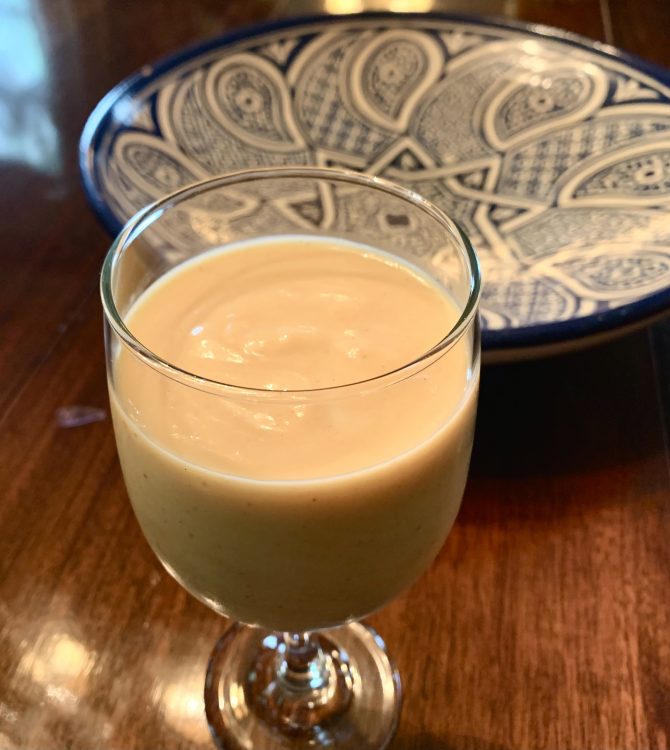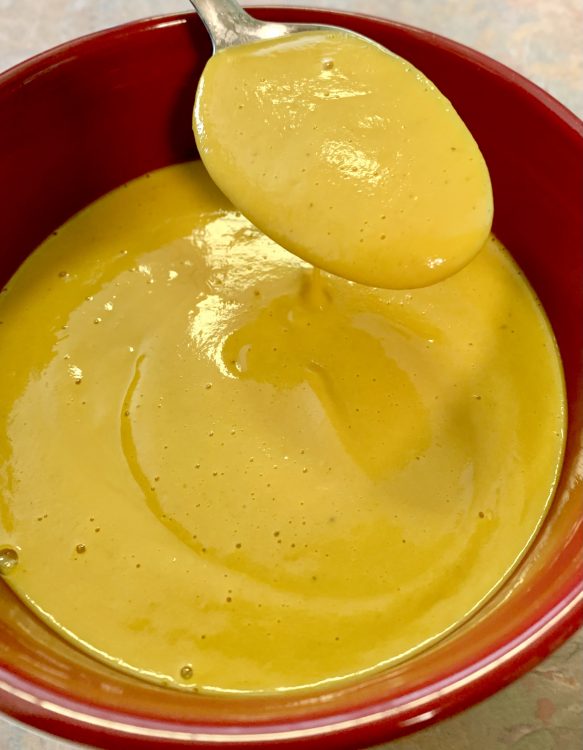How to Cook Flavorful Yet Digestible Food When You Have Gastroparesis
Editor's Note
We hope the products below help you or a loved one in your health journeys. Just so you know, The Mighty may collect a share of sales from the affiliate links on this page. As an Amazon associate, we earn from qualifying purchases.
Gastroparesis is a chronic condition characterized by the inability of the stomach to fully empty. Symptoms can include nausea, upset stomach, bloating, gas, acid reflux, irregular blood sugar levels, and a constant sensation of fullness making it difficult for someone to eat a complete meal. Long-term effects of gastroparesis can include unintended weight loss, nutritional deficiencies, dehydration, and the development of masses in the small intestines called bezoars, which are essentially little pockets of undigested food that cannot make their way through the digestive system.
While the cause of gastroparesis can be varied, the primary culprit is damage to the vagus nerve which is the longest nerve in the human body, responsible for the processing of food through your entire digestive tract. This can be a common complication of both diabetes and cancer, but is also attributable to viral infection, narcotic use, and gastric surgeries like bypass. While some medications may help with alleviating symptoms, more commonly a medical professional will recommend treating the condition through diet. Recommendations include eating smaller, more frequent meals, limiting fiber, restricting fat, avoiding alcohol, drinking plenty of fluids, and consuming foods that are puréed. This guide from the Cleveland Clinic has a complete list of foods that are recommended and contraindicated for gastroparesis.
From my perspective as a chef, I wanted to take a look at some practical aspects of living with gastroparesis, particularly where diet is concerned. Gastroparesis isn’t curable per se, but it can be managed by adapting your lifestyle to incorporate the foods and food habits recommended. My primary aim is to help with some tips and tricks and to suggest a couple of delicious recipes for you to try. It is my hope that having the proper tools and knowledge can turn what seems like a very limiting diet into a sustainable ritual that can be both healthy and enjoyable.
Cooking Tips for People With Gastroparesis
1. Get the right kitchen equipment for cooking with gastroparesis.
It goes without saying that the proper tools make any task easier to achieve. When it comes to liquefying food, there are two items I cannot do without: a good quality blender/food processor and an immersion blender. While I recognize that it might be cost-prohibitive for some, investing in a high-quality multi-purpose gadget like a Vitamix or a Nutri Ninja is the best way to insure you can purée virtually anything you might want to eat. I have one of each, but for the average home cook, one is sufficient.
A good quality immersion blender is critical for when you are wanting to purée something hot without waiting for it to cool, like soups or sauces. While there are many suitable options, make sure to obtain one with a metal blade instead of a plastic one as I’ve had a plastic blade melt into my soup before.
2. Use these techniques for cooking without fat or with little fat so food is easy to digest.
The best method of cooking vegetables to maximize flavor while making them soft enough to purée is to roast them. Place them on a baking sheet at 375 degrees. Using as little as a 1/2 teaspoon of oil and just a pinch of salt to toss the veggies, you can coax deep nutty flavors out of vegetables thanks to the sugars in them caramelizing. Depending on the vegetable it can take anywhere from 20 minutes to 45 minutes for the vegetables to soften and cook through completely. Just be sure to toss occasionally and keep an eye on the vegetables so that they don’t burn.
Additionally, braising vegetables in a saucepan can be an excellent alternative to steaming or boiling them. Simply place the vegetables in the pan, add just enough vegetable stock to cover about 1/4 of the vegetables, bring to a boil, reduce to a simmer and put a lid on it. Stir occasionally until the vegetables are fork tender. The liquid will reduce and coat the vegetables, creating almost a glaze over them. If you are feeling fancy, feel free to season the vegetables with your favorite spices or dried herbs.
3. Protokinetic herbs and spices.
Speaking of herbs and spices, many different natural herbs and spices are classified as protokinetic, meaning they can assist with digestion by promoting gut motility. The most often cited are ginger, turmeric, and mint. However, if you look at cultures around the world, many ethnic cuisines use herbs and spices medicinally, particularly to help aid in digestion. When I did my research for my master’s thesis in cultural anthropology on tea rituals in Morocco, I spent a great deal of time at spice shops getting educated on their use of spices in cooking to help boost digestion and settle upset stomachs. Their most common go-to ingredients besides ginger, turmeric (curcumen), and mint were cumin, caraway seeds, and cinnamon. And as someone who lives with a myriad of digestive disorders including irritable bowel syndrome, I was remarkably impressed at how well I tolerated the food there, even food prepared in the street markets.
4. Make your food appetizing, even when you’re on a limited ingredient diet due to gastroparesis.
Satiety, or the state of being full, is often discussed from the opposite perspective in that people are constantly seeking to achieve a state of feeling as though they got enough to eat. In the case of gastroparesis, feeling full isn’t the issue, but from the perspective of a more culinary-minded definition of satiety, the act of eating may not be something that creates a sense of satiety in the satisfaction sense of the word.
There are many things that can contribute to that satisfaction that don’t have to do with the quantity of food consumed. As a chef, I most often turn to the five senses as a means of creating satiety that is holistic in its achievement. Does the food look good — meaning is it colorful, enticing? Does it smell good? Does it have a nice texture? Does it sound appetizing when you bite into it or scoop it? And above all, do the flavors stimulate your taste buds? All of these factors are critical in truly enjoying your food. Even with a diet that consists of limited ingredients and puréed foods you can achieve every one of these by incorporating herbs and spices and by garnishing with a crunchy topping like crackers.
5. Practice mindfulness to savor each bite.
And one last pro tip, try eating puréed foods out of a bowl with a spoon. The act of using utensils not only slows down the eating process which is helpful for digestion, it is a more mindful way of eating, allowing you to really absorb all of those smells, sights, and flavors hitting your palate.
Gastroparesis-Friendly Recipes
Both of these recipes will make enough for multiple servings. Depending upon appetite, serving size may vary so I have not included the number of servings in the recipes.
Super Smoothie
1 ripe banana
3.9 ounces no sugar added apple sauce
1 tablespoon creamy peanut butter or almond butter
1 teaspoon vanilla extract
1/2 teaspoon pumpkin pie spice
1/2 cup no sugar added canned sliced peaches
2 tablespoons nonfat milk
1/2 tablespoon pure maple syrup or honey
Place all the ingredients in a blender and purée until smooth and creamy. Refrigerate leftovers.

Sweet Potato Carrot Soup
1 teaspoon olive oil
3 1/2 cups peeled and chopped sweet potato
2 cups peeled and chopped carrots
2 1/2 cups super firm tofu cut into chunks
1 teaspoon kosher salt
1/2 teaspoon freshly ground pepper
2 teaspoons curry powder
4 cups vegetable stock
2 tablespoons pure maple syrup
Heat oil in a medium stock pot over medium-high heat. Add sweet potatoes, carrots, and tofu. Season with salt, pepper, and curry powder. Sauté for two to three minutes. Add stock and bring to a boil. Cover and reduce heat to a simmer. Cool for 45 minutes or until the vegetables are soft. Add maple syrup and purée using an immersion blender until creamy and velvety. Alternately, cool the soup completely and purée in a blender or food processor a little at a time. Leftovers will keep in the refrigerator for a week or can be divided into smaller portion sizes and frozen.

Remember, gastroparesis doesn’t have to mean a life of eating bland foods. There may be a period of time after you are first diagnosed where you will have to be more stringent with what you consume to help reduce inflammation. But once your gut has healed a bit, you should be able to incorporate more diversity into your diet including some whole foods like white rice, pasta, and bread. And please consult with your medical practitioner to inquire about the addition of a multivitamin supplement to boost your immunity and overall health in order to compensate for any nutritional deficiencies you may encounter.

